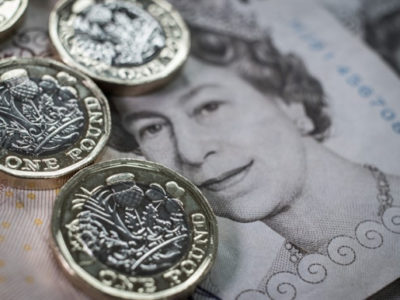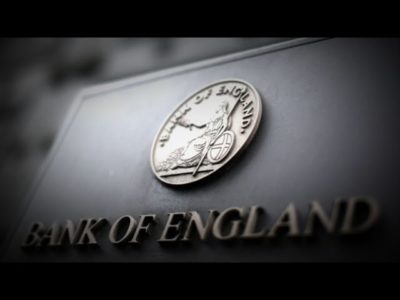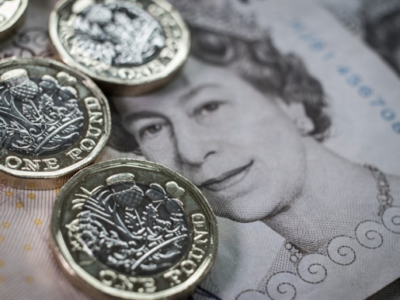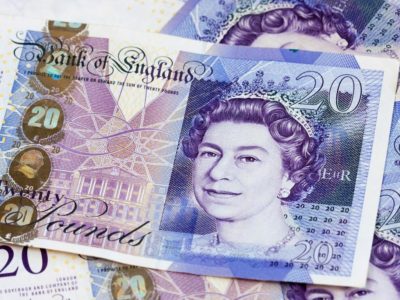GBP Falls From Yearly High as BOE Lowers UK Growth Forecasts
The British pound (GBP) fell towards the $1.3100 level against the US dollar (USD), after the Bank of England (BOE) left its key interest rate unchanged and confirmed withdrawal of part of the monetary policy stimulus introduced last year. The central bank also downgraded forecasts for the UK economy as it said reduced consumer spending will drag GDP growth to 1.7% this year, down from a previous forecast of 1.9%.
The GBP had previously touched a new 2017 trading high against the USD, hitting 1.3269, just hours before the BOE rate decision came.
BOE Vote Split
The MPC voted by six votes to two to leave bank rate untouched at its historically low level of 0.25%, with Ian McCafferty and Michael Saunders dissenting. The Bank’s chief economist, Andy Haldane, did not vote for a hike, after previous suggestions he might. However, despite the downgrade to its growth outlook, the rate-setting monetary policy committee also gave a more hawkish signal that rates could rise earlier than markets are currently pricing.
The Bank’s central forecasts now imply an interest rate hike by the third quarter of 2018, and a second by the end of the forecast period, but the MPC’s minutes added: “Monetary policy could need to be tightened by a somewhat greater extent over the forecast period than the path implied by the yield curve underlying the August projections.”
NFP Report Better than Expected
US private employers added 178,000 jobs in July, below economists’ expectations, a report by a payrolls processor showed last week. Economists surveyed by Reuters had forecast the ADP National Employment Report would show a gain of 185,000 jobs, with estimates ranging from 151,000 to 225,000 jobs added. Private payroll gains in the month earlier were revised up to 191,000 from an originally reported 158,000 increase.
The unemployment rate in the Eurozone fell to its lowest since February 2009, according to the latest official figures out last week. The EU unemployment rate dropped to 9.1% last month, from a downwardly revised 9.2% in May. Separately, inflation for the region remained unchanged in July at 1.3%, however, core inflation, which excludes food, alcohol and energy prices, rose to 1.2% from 1.1% in June. Inflation in the 19-nation bloc still remains well below the European Central Bank’s target of close to, but below, 2%.
The positive set of data helped boost the sentiment towards the single currency, and pushed the euro to two and half year trading high against the US dollar, with the EUR/USD pair hitting 1.1910.
RBA Kept Rates Unchanged
The Reserve Bank of Australia (RBA) kept its benchmark rate unchanged on Tuesday in a widely expected move. The country’s cash rate has stayed at 1.5% since August 2016. Commenting on the Australian dollar, the RBA said the recent strength “is expected to contribute to subdued price pressures in the economy.” RBA governor Philip Lowe said “It is also weighing on the outlook for output and employment. An appreciating exchange rate would be expected to result in a slower pick-up in economic activity and inflation than currently forecast”.
The Australian dollar fell towards the 0.7900 level against the US dollar, after reaching a weekly price high of 0.8042, slightly below the 2017 price set the previous week, at 0.8065.
The New Zealand dollar fell over half a percent against the US dollar, after Q2 employment figures came in much lower than expected. The kiwi was previously trading above the $0.7500 level, but quickly fell towards $0.7400 after the release of employment figures from New Zealand showed a quarter-on-quarter fall in employment of 0.2%, forecasters had predicted a 0.7% increase. Year-on-year growth in employment slowed to 3.1% in the quarter ended June from 5.7% in the first three months of 2017, whilst the unemployment rate came in at 4.8%.
In the upcoming trading week, the Reserve Bank of New Zealand decides on interest rates, at a time when other Central Banks are starting to tighten monetary policy.
We also see the release of July PPI and Core CPI figures from the United States, as the Federal Reserve (Fed) started to raise concerns about persistently weak inflation in the US economy.
https://uk.finance.yahoo.com/news/apos-high-gear-apos-us-121500927.html
https://www.cnbc.com/2017/07/31/reserve-bank-of-australia-monetary-policy-decision.html
https://www.ft.com/content/c233bdf0-75de-11e7-a3e8-60495fe6ca71
The post GBP Falls From Yearly High as BOE Lowers UK Growth Forecasts appeared first on Forex.Info.
Source:: GBP Falls From Yearly High as BOE Lowers UK Growth Forecasts











